Drones, clones and no fly zones: how robot aircraft are taking over the world
Amazon and Google bring drone thinking to the masses
The Future
The ability of farmers and filmmakers to use this tech comes as landowners or with permission from them. There are still strict regulations. Aerosight "can't go within 50 meters of any sensitive areas without special permission." And can't fly higher than 400ft.
Those regulations minimalise the potential for drones to be in use outside of quite specific areas, especially in built-up cities. Amazon itself had to film its proof-of-concept video for Prime Air outside of the US so as not to break the regulations!
All that may change in 2015 when the Federal Aviation Authority in the United States outlines its regulations on unmanned vehicles. It's what Amazon is banking on to get its Prime Air delivery plan off the ground – so to speak. In a couple of years, the skies may clear, from a legal standpoint.
After that the possibilities are endless, according to the UAV community.
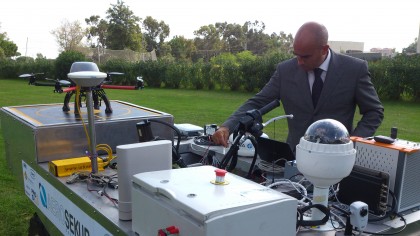
The proliferation of drones in the years to come is all about enhancing "situational awareness," according to Toscano. "It's an extension of the eyes and ears of a person who knows how to do a job better than anyone else. It's all about giving good information to smart people to make smart decisions."
Examples? What about search and rescue? Fire-fighters will be able to send in the drones to search for hazards and people, before entering dangerous buildings, lessening the risk. Search parties can send out UAVs equipped with heat-seeking cameras to search for missing people in the woods. Human exploration could also benefit if we could collect data by sending drones with specially equipped sensors and cameras to volcanoes, for instance?
"A drone is an extension of the eyes and ears of a person who knows how to do a job better than anyone else."
Sign up for breaking news, reviews, opinion, top tech deals, and more.
As Toscano says, the UAV itself is "just a truck. It's the data that it can collect that's important. It's the mission payload, the sensor system and the acoustic system that makes it such a great tool."
Drawbacks
When Jeff Bezos described his drone plan, he made it seem like these machines would be ready to go tomorrow, if it were legal. Despite Jeff's optimism, those in the industry tell us it's a ways away yet.
Getting these machines up there, isn't the problem. It's keeping them up there and doing it safely that is of chief concern.
"These vehicles can fly for about 15 minutes at a time depending on weather conditions," said Volt Aerial's Rory Paul. "That's something that has relevance to Amazon because it's tied to battery technology. As long as we have limited battery life and capacity, the utility would be relatively limited. A whole lot of work needs to be done on that front."
"Unfortunately manufacturers tend to test these things in idyllic situations. As soon as the wind starts blowing, you're using more battery power to stay in the air."
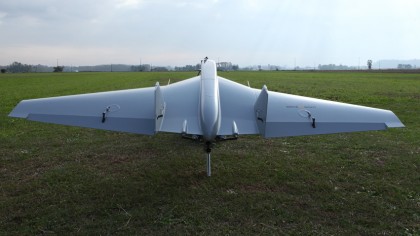
Aerosight's Dean Wynton told us work is on going with lithium batteries, that are lighter and more powerful, but currently "it's a balancing act between weight and power, but there aren't a lot of multi rotor vehicles that fly longer than 20 minutes. That's the main problem. You can get a single rotor helicopter, but that's quite a big old lump and you can take someone's head off if it goes too close!"
Safety is another big concern for those sceptical of Amazon's and Google's plans as well as the notion that members of the public will be buying up drones in droves in years to come.
"There's no way Amazon are going to be able to fly whatever they want, whenever they want. That's not going to happen."
"For an unmanned system safety is paramount," said Toscano who assesses that agriculture will probably emerge as the key usage for the tech as crops don't care about noise and privacy and there's nothing for them to collide with for miles around.
"If you can assess there's no safety risk then you can utilise the technology," he said.
Could they really operate safely in metropolitan and residential areas? Avoiding trees, power lines, wildlife and, if this vision of the future is realised, a sky full of other drones?
Toscano is optimistic. He thinks, as with any new technology, there'll be a certain amount of "risk acceptance," like "every time you step into a car," while the privacy concerns will fade with time while the law can be relied on to handle those don't use the technology responsibly.
"Just because a car can travel at speeds of 150mph, doesn't mean you do it," he said.
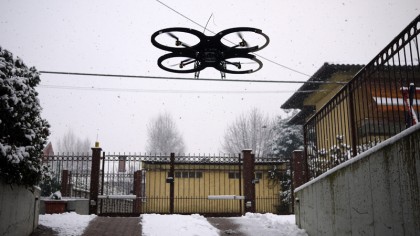
However, Wynton said he's already concerned about the number of recreational drones dropping out of the skies because people can't operate them properly.
"Essentially these things are flying lawnmowers that aren't things you want to come face to face with. If one of the blades hit you, especially on the bigger ones, it could take off fingers," he said.
The home
We've spoken a lot about the wider uses for drone technology, but how about in the home? One of the most intriguing elements of this discussion is envisioning a future where we all have our own drones, which we can send out, equipped with a mission and some GPS co-ordinates, to pick up our grocery shopping, run our errands and deliver our mail.
Surprisingly, there seemed to be little enthusiasm for domestic UAVs among our experts who struggled to see many real use cases for airborne drones around the old domicile.
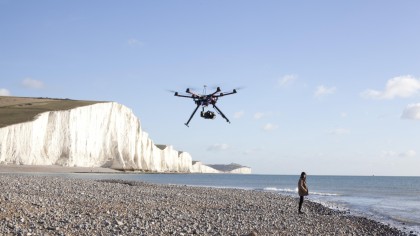
How about home surveillance? Wired security cameras are more reliable and "it's definitely not worth spending a few thousand pounds to spy on neighbours," Dean Wynton joked while pointing out they wouldn't be much use around the house either.
"It's definitely not worth spending a few thousand pounds to spy on neighbours."
Rory Paul agrees: "I don't envision them being in the home environment," he said. "If you're talking about the automated floor cleaners and lawnmowers then that's a different thing altogether."
It appears that we won't be sending off these droids on pre-set missions any time soon. There's far more interest in ground-based solutions, such as driverless cars, which Google is working on and plans for trials in the UK in Milton Keynes have already been announced.
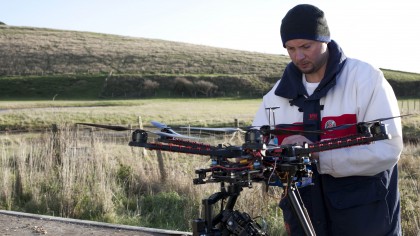
"From a mobility standpoint, we have over six million accidents in the United States every year," said Toscano. "More than a third of those accidents, the driver never puts their foot on the breaks. So there's a lot of distracted drivers, there's a lot of people falling asleep and they're not very good drivers at all."
"This tech is coming fast and it's going to save lives."
Can Amazon pull it off?
While not doubting the capabilities of the technology, many in the industry view Amazon's plan as a well-timed publicity stunt (the revelation on '60 Minutes' aired on the eve of Cyber Monday), but Bezos insists the tech is real and it "will" happen. He estimates within 4-5 years Prime Air droids will be in the skies dropping off books, smartphones and other small items.
Others are more cautious.
"There's no way Amazon are going to be able to fly whatever they want, whenever they want. That's not going to happen," Dean Wynton of Aerosight, opines.
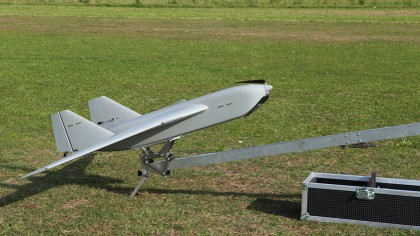
Rory Paul of Volt thinks the obstacles may be too much to overcome: "Knowing these systems and the amount of challenges it's going to take to deploy them, it definitely seems like a publicity stunt.
"You have to look at it commercially as well," he added. "Is it going to be more expensive to deliver a package using one of these systems with all the hurdles he's going to have to overcome, or is it going to be more efficient to hand it off to UPS like they do today?"
While accepting the trials that lie ahead for Bezos and Google, Michael Toscano has a more positive outlook.
"With the maturation of the technology, there are still challenges that we have, but for the most part people understand we can fly these systems. If you look at it from a walk, crawl, run perspective, Amazon showed you the 'running.' That's where you have the ability to autonomously deliver something from point A to point B."
"As a delivery system there is a tremendous opportunity here, a tremendous capability here to be more effective, to reduce costs and in many cases, save lives."
- Read more on Google's drone reality
- 1
- 2
Current page: Drones, clones and no fly zones: future drones
Prev Page Drones, clones and no fly zones: present dronesA technology journalist, writer and videographer of many magazines and websites including T3, Gadget Magazine and TechRadar.com. He specializes in applications for smartphones, tablets and handheld devices, with bylines also at The Guardian, WIRED, Trusted Reviews and Wareable. Chris is also the podcast host for The Liverpool Way. As well as tech and football, Chris is a pop-punk fan and enjoys the art of wrasslin'.
